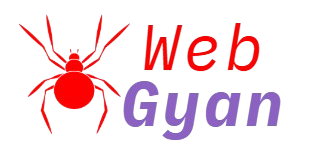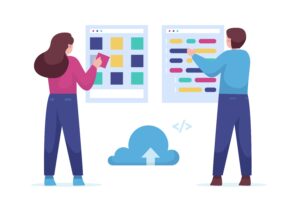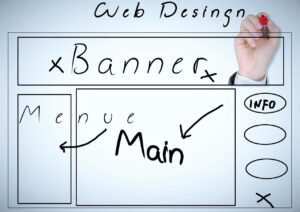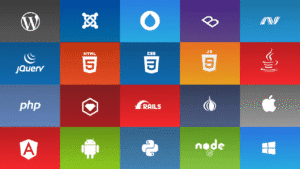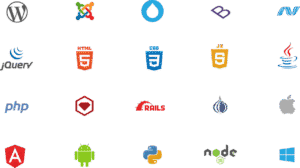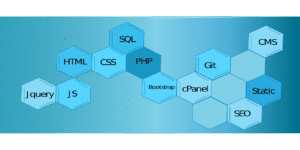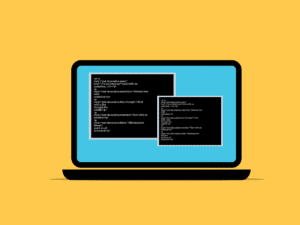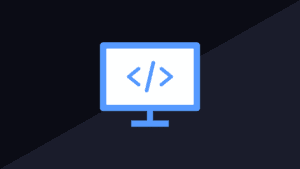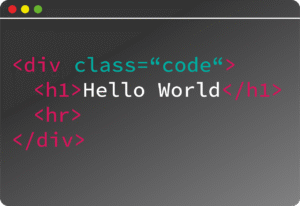A Comprehensive Guide to Boost Your Knowledge and Exam Preparation
Introduction
Today, the internet and web technology shape our lives more than ever. From online shopping to social media, understanding these concepts is crucial. Preparing for exams or certifications demands practicing multiple-choice questions (MCQs). These questions help you test your knowledge quickly and identify areas to improve. In this article, we will cover common MCQ types, key topics, and tips to master Internet and Web Technology MCQs efficiently.
Understanding the Basics of Internet and Web Technology
Definition and Components of Internet
The Internet is a global network that connects millions of computers. It allows data sharing and communication across countries effortlessly. Key parts include:
- Servers that host websites and services
- Clients, like personal computers and smartphones, that access data
- Internet Service Providers (ISPs) that give you internet access
- Protocols like TCP/IP that define how data flows
Overview of Web Technologies
The World Wide Web makes information accessible via browsers. It uses various tools and languages. Major technologies include:
- HTML for building web pages
- CSS for styling and layout
- JavaScript for interactivity and dynamic content
Evolution of the Web
The web developed through stages—from simple static pages in Web 1.0 to interactive and social platforms in Web 2.0. Now, Web 3.0 aims to make the web smarter with artificial intelligence. Every step has changed how we work, learn, and connect.
Common Types of MCQ Questions in Internet and Web Technology
Conceptual Questions
These test your understanding of basic ideas. For example, “What does HTML stand for?” or “Which protocol is used for secure browsing?” Expect questions asking for definitions or purpose.
Technical and Functional Questions
They focus on how protocols and tools work. You might see questions like, “Which port does HTTPS use?” or “What is the role of DNS?” Knowing technical details helps you answer correctly.
Practical Application Questions
These questions present real-world scenarios. For example, “If a website loads slowly, which protocol might be causing the issue?” Practice these to sharpen problem-solving skills. Think about scenarios and what technology to apply.
Recent Developments and Trends
Stay updated with latest tech like cloud computing, Internet of Things, and AI integration. Questions here test your awareness of current trends that impact web technology and internet use.
Key Topics Covered in Internet and Web Technology MCQs
Networking Protocols and Models
Understanding how devices communicate helps answer questions like:
- “What is the main purpose of TCP/IP?”
- “Which layer of the OSI model handles routing?”
Common MCQs include topics like DNS, DHCP, and the OSI model, each with explanations clarifying their function.
Web Development Technologies
Questions may focus on:
- Semantic HTML tags (like
<article>,<nav>) - Responsive design techniques for mobile-friendly pages
- How the Document Object Model (DOM) works
For example, “Which tag is used for navigation?” tests your HTML knowledge.
Web Security and Privacy
Protection against threats is vital. Common MCQs cover:
- Types of malware and phishing scams
- Secure protocols like SSL/TLS
- Best practices such as strong passwords and encryption
Understanding these helps you grasp how websites stay safe.
Search Engines and Indexing
Learn how search engines work, including:
- Crawling websites
- Indexing pages
- Ranking results based on algorithms
Sample question: “What is the purpose of a sitemap?” helps in understanding site indexing.
E-commerce and Online Transactions
Questions cover digital payments and security. Topics include:
- Payment gateways and encryption
- Digital signatures
- Securing online transactions
Knowing how these systems protect user data is essential.
Strategies for Solving MCQs in Internet and Web Technology
Understanding the Question
Read carefully to find keywords. Highlight important words like “best,” “most likely,” or “not.” Break down sentences to grasp what’s asked.
Eliminating Wrong Options
Identify distractors—answers that seem correct but aren’t. Narrow choices down by eliminating obvious incorrect options first. This increases your chances of picking the right answer.
Time Management
Tackle easier questions first. Don’t get stuck on tough ones; flag them and move on. Spending too much time on one question can cost you valuable points on others.
Practice and Review
Use online quizzes, mock tests, and flashcards. Regular practice boosts confidence and helps memorize concepts. Review wrong answers to avoid repeating mistakes.
Resources and Tools for Preparing MCQ Questions
- Online platforms: Websites like Udemy, Coursera, and Quizlet offer quizzes on internet tech.
- Books: Find reliable textbooks and exam guides focused on networking and web development.
- Discussion forums: Join groups such as Stack Overflow or Reddit to clear doubts.
- Flashcards: Use them for quick revision of key concepts and definitions.
Conclusion
Mastering MCQ questions in internet and web technology can significantly enhance your exam scores and practical understanding. Focus on key topics like protocols, web development, and security. Use effective strategies like careful reading, process of elimination, and regular practice. Keep learning about new trends and updates in this fast-changing field. Remember, consistent practice makes perfect. Stay curious and keep exploring—your success depends on your efforts today.
